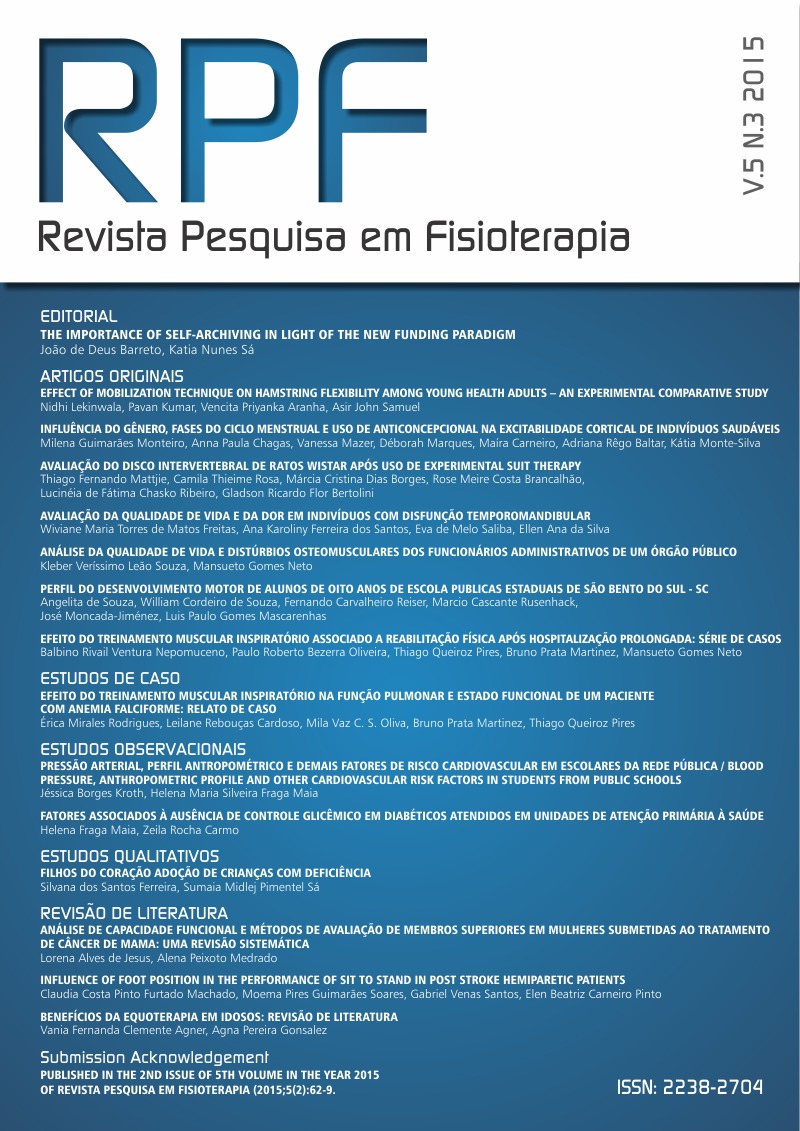ANALYSIS OF QUALITY OF LIFE AND MUSCULOSKELETAL DISORDERS ADMINISTRATIVE EMPLOYEES OF A PUBLIC BODY
DOI:
https://doi.org/10.17267/2238-2704rpf.v5i3.703Keywords:
Quality of life, Cumulative trauma disorders, Occupational health, Public sector, Physical therapy specialtyAbstract
Background: The workers who perform administrative activities constitute a population that is directly exposed to ergonomic risk, being subject to the appearance of musculoskeletal disorders and impairment of their quality of life (QOL). Objectives: To assess the QOL and the musculoskeletal disorders of administrative officials of a public agency and check if the possible musculoskeletal disorders were capable of influencing the QOL of same. Methods: Data were collected demographic and occupational data, in addition to the SF-36 - Medical Outcomes Study 36 and Nordic Musculoskeletal symptoms, which were analyzed with the use of software SPSS® (Statistical Package for the Social Sciences) for Windows (Version 14.0). Results: The sample was composed of 100 individuals with a mean age of 38 ± 11,6 years, predominantly female (76%), single (55%) and average schooling (47%). The limitation of Physical Aspects presented the highest score, Pain and Vitality with lower scores in SF-36. All reported musculoskeletal changes in at least one region, where the most indicated the wrist/hand/finger (62%) as the body segment most affected by musculoskeletal symptoms over the past 12 months, followed by shoulder (59%), by lumbar (57%) and neck (56%), respectively. Conclusion: Despite the high frequency of musculoskeletal disorders, QOL was not severely affected, suggesting that other factors are required for this commitment.



